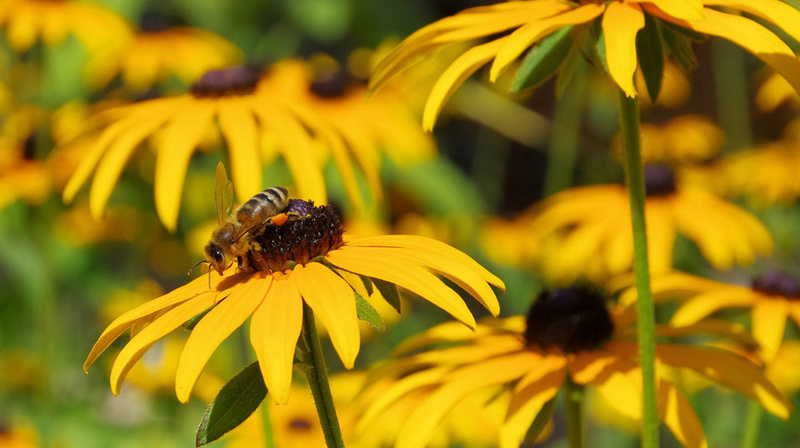
Plant a Pollinator Garden
Pollinating insects are responsible for the production of vegetables, fruits, and nuts that we eat every day. Pollinator gardens provide food and shelter for these insects. Whether you choose a patio planter or a backyard bed, you can create a pollinator garden of your own.
What is a pollinator garden? It’s an area of landscaping with plants visited by insects that pollinate other plants. You can easily include one in your landscaping.
Why Are Pollinators So Important?
Many plants won’t flower or fruit without pollination–a process that involves the transfer of pollen for fertilization. Three of the four major crops that humans eat have to be pollinated. More than 80% of plants and 300,000 species of flowers need pollination for growth and production.
Pollen is transferred from one plant to another by insects and some birds. Bees are one example of a pollinating insect.
In short, we depend on pollinators for the production of fruits, nuts, and vegetables that we eat every day. These foods contain essential vitamins and minerals that keep us healthy and strong.
What Do Garden Plants Provide for Pollinators?
Pollinator gardens provide three essentials for insects and birds:
• Safety – the plants in pollinator gardens provide places for insects to hide from predators and weather.
• Places to lay eggs and raise babies
• Food – the nectar and pollen in the plants sustain insects and birds.
What Plants Should Be in a Pollinator Garden?
Pollinators need nectar and pollen, so you should install ground covers, annuals, perennials, shrubs, and trees that produce those substances.
Here are a few great plants to consider for your Florida pollinator garden:
Mint
Mint not only tolerates heat and humidity, but it thrives in these conditions. It’s perfect for a Florida pollinator garden.
Black-eyed Susan
Do you live on the coast? The black-eyed Susan grows well in salty air, so it’s a great choice for coastal pollinator gardens. It also tolerates drought (and looks great in a vase on a countertop).
Walter’s Viburnum
This Florida staple produces small white flowers, requires little maintenance, and makes an excellent hedge.
Saw Palmetto
A Florida native, this plant is superbly resistant to drought and dry conditions. Pollinators love its fragrant flowers.
You Can Create a Micro Pollinator Garden
Don’t have acreage that you can dedicate to a pollinator garden? Don’t worry. Even a small area with pollinator plants can make a difference. A city with a patchwork of small pollinator gardens will have an impact.
The Million Pollinator Garden Challenge
The Million Pollinator Garden Challenge (MPGC) was launched to “preserve and create gardens and landscapes that help revive the health of bees, butterflies, birds, bats, and other pollinators across America.”
The Challenge reached its goal in 2018, and people are continuing to register pollinator gardens on MPGC’s website. Miami-Fort Lauderdale homeowners registered nearly 20,000 gardens; Floridians in Tampa-St. Pete contributed another 5,000.
MPGC Garden Guidelines
MPGC offers the following guidelines for pollinator garden creators:
• Plants installed should produce nectar and pollen
• Include a water source, like a bath or simple fountain or puddle
• Locate the garden in a sunny location with wind protection
• Include native and non-invasive plants
• Include plants that bloom continuously during the growing season
MPGC affirms that size doesn’t matter. Pollinator gardens can be as small as a patio planter and as large as a whole prairie. Every pollinator garden makes a difference.